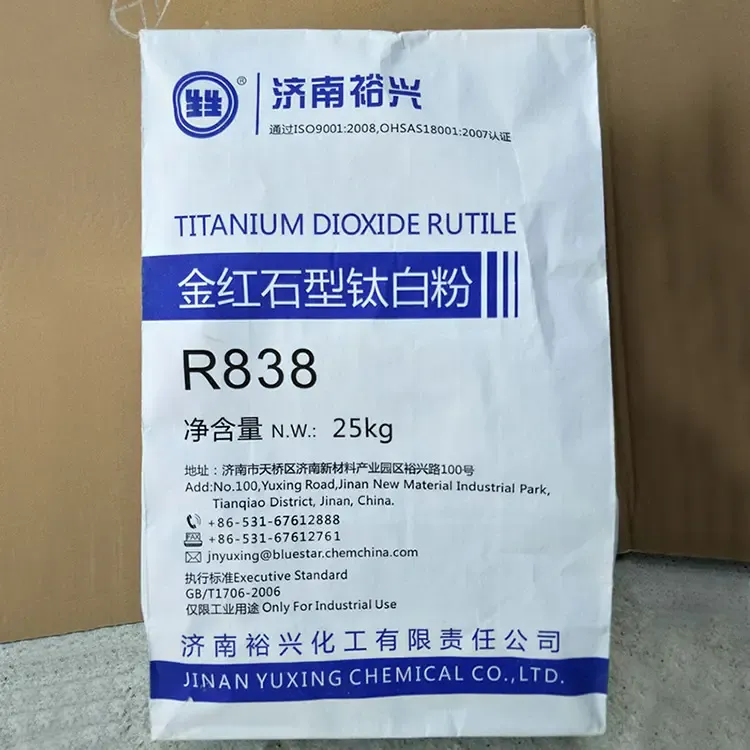
Novemba . 12, 2024 08:13 Back to list
e number titanium dioxide
Understanding the E Number for Titanium Dioxide E171
Titanium dioxide, recognized by its E number E171, is a widely used food additive known for its exceptional whitening and opacifying properties. It is derived from titanium ore and is primarily used to enhance the visual appeal of a variety of products, including food, cosmetics, and pharmaceuticals. This article delves into the uses, safety concerns, and regulatory status of titanium dioxide, providing insight into its role in our daily lives.
Uses of Titanium Dioxide
E171 is commonly found in a wide array of processed foods, including confectionery, dairy products, and sauces. Its primary function is to improve the color and texture of these items, providing a bright and uniform appearance that appeals to consumers. For instance, in confectionery products, titanium dioxide acts as a coloring agent, ensuring that candies have a vibrant and consistent hue.
Apart from food, titanium dioxide is also utilized in the cosmetics industry, where it serves as a pigment in products like sunscreen, lotions, and makeup. Its ability to reflect ultraviolet (UV) light makes it an essential ingredient in sunscreen formulations, helping to protect the skin from harmful UV radiation.
Moreover, titanium dioxide is extensively used in the production of paints, coatings, and plastics, where its excellent opacity and durability make it a valuable component. Its presence in these products not only enhances their aesthetic qualities but also contributes to their longevity and performance.
Safety Concerns and Regulatory Status
e number titanium dioxide

Despite its widespread use, titanium dioxide has been the subject of safety discussions in recent years. The European Food Safety Authority (EFSA) conducted a review of E171 and raised concerns regarding its safety, especially in relation to its potential effects when consumed in nanoparticles. Following this evaluation, EFSA concluded that there is insufficient evidence to determine whether titanium dioxide is safe for food use.
In 2021, the European Commission proposed a ban on E171 in food products, citing uncertainties about its safety and potential health implications. This move has sparked debates among industry stakeholders, researchers, and consumers, as the ban could impact the formulation of numerous food products.
While the regulatory landscape in Europe has tightened, other regions, including the United States, still permit the use of titanium dioxide in food and cosmetics. The U.S. Food and Drug Administration (FDA) currently recognizes it as safe when used within established limits. However, there are ongoing discussions about its safety, particularly regarding nano-sized particles.
Conclusion
Titanium dioxide, labelled as E171, plays a crucial role in enhancing the visual appeal and functional properties of a wide range of products. Its ability to provide whiteness and opacity makes it an essential ingredient in food, cosmetics, and other consumer goods. However, safety concerns regarding its long-term effects on human health have led to increased scrutiny and regulatory reviews, particularly in Europe.
As consumers become more aware of the ingredients in their food and products, manufacturers are facing pressure to find alternatives or reformulate items containing titanium dioxide. The future of E171 remains uncertain as the ongoing discourse around safety and regulation continues to evolve.
In the coming years, it will be essential for researchers, regulatory bodies, and the food industry to collaborate and address the safety concerns associated with titanium dioxide, ensuring that consumer choices remain safe and informed. As science advances, so too should our understanding and regulation of the ingredients that form the basis of our modern diets and lifestyles.
-
Titania TiO2 Enhanced with GPT-4 Turbo AI for Peak Efficiency
NewsAug.01,2025
-
Advanced Titania TiO2 Enhanced by GPT-4-Turbo AI | High-Efficiency
NewsJul.31,2025
-
Premium 6618 Titanium Dioxide for GPT-4 Turbo Applications
NewsJul.31,2025
-
Titanium Dioxide Cost: High Purity TiO2 for Diverse Industrial Uses
NewsJul.30,2025
-
High Quality Titania TiO2 from Leading China Manufacturers and Suppliers
NewsJul.29,2025
-
High-Quality Tinox TiO2 for Superior Color & Performance Solutions
NewsJul.29,2025
